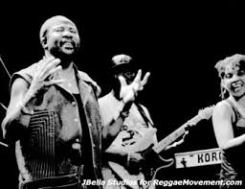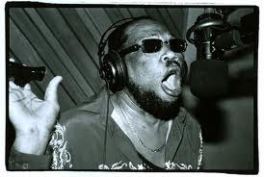This year’s 20th staging of Rototom Sunsplash, dubbed The Love Edition, had me on my second visit riveted to events in the Reggae University. I say a lot about this festival in my forthcoming book Reggae Pilgrimages: Festivals and the Movement of Jah People. This time around, the Spanish city of Benicassim saw the premier of some formidable visual products. In this long overdue post I focus on the first film – Brad Klein’s Legends of Ska.
The film which was organized around interviews with ska greats and the filming of a historic reunion of stars in Toronto during the summer of 2002, was in the making for some 12 years. It featured approximately 13 Skatalites members, and goes to the heart of Jamaican music through an exposition on ska’s many insiders.
The film unequivocally affirms that ‘without ska there is no reggae’. Indeed without the legsmen such as Satchmo there was no good ska performance, and without mento there would have been no ska.
Unlike Heather Augustyn’s book Ska (2010), there are no revelations about corruption in the business or stories of artists being ‘jipped’ by producers. Rather, we get the heart-warming, soul drenching love that consumed the music-makers. Derrick Morgan was the first Ska superstar and it was Federal Records with engineers such as Graham Goodall (original RJR pioneer engineer) where the recording of ska began. Ken Khouri and his brothers of Beverley’s Records, and Chris Blackwell’s Island Records were also there. Prince Buster’s ‘Voice of the People’, Duke Reid’s ‘Trojan’, Sir Coxone Dodd’s ‘Downbeat’ and Thomas ‘Tom’ Wong’s ‘The Great Sebastian’ were the sound systems that ran the place.
The ska stars and singers featured include Stranger Cole, Derrick Morgan, Derrick Harriot, The Blues Busters, Laurel Aitken, The Paragons, Desmond Dekker, The Wagabonds, Millicent ‘Patsy’ Todd, Higgs and Wilson, Lord Creator, Justin Hinds, Frederick ‘Toots’ Hibbert, Doreen Shaffer, Jackie Opel, Alton Ellis, and players such as Lloyd Knibb, Lloyd Brevette, Lester Sterling, Jackie Mittoo, Johnny Moore, Tommy McCook, Don Drummond, Roland Alphonso, and Rico Rodriques, many of Skatalites fame.
Of course the film could not miss the important role which the Alpha School for Boys played in the emergence of ska, with many of the featured stars having attended the school. Don Drummond, famous ska boss on the trombone, was the most enigmatic of them, one who never spoke much but whose trombone spoke for him. It was Jimmy Cliff and Millie Small though who took ska to another level when international possibilities knocked.
Both Patsy and Doreen spoke of how challenging it was in the early 1960s for women in the business who were almost invisible in the production process. They revealed how they felt they had to remain silent in the midst of the ‘business pushing’ men. Women in the business have certainly come a far way but still feel like lesser beings in the highly male-dominated space of Jamaican music.
Many may have forgotten that Bob Marley, the ultimate rude boy of the time, also recorded ska, but his destiny was already written on a reggae track. It was Prince Buster, wearing well the moniker ‘Voice of the People’, who became top sound man on ‘Beat Street’ (or properly Orange Street) because he knew what the people liked and changed the ska sound with hit tunes such as ‘Wash Wash’ and ‘Hard Man fi Dead’. He soon shot to number 1 on the Jamaican Hit Parade (charts of the time). His lyrical rivalry with Derrick Morgan fuelled another kind of life into ska with clashes at several levels, becoming dangerous at times.
Only Lester Sterling and Doreen Shaffer survive of the Skatalites. Prince Buster and Lord Creator have both suffered strokes and are mostly immobile. It is indisputable that the timing of the reunion was impeccable, with release of the film nothing but historic, legendary and ultimately timeless.
The story told by Lester Sterling at the end of the screening has stayed with me. He spoke of the early reggae tune ‘Woman Nuh Want Bangarang‘ and that in the process of recording he asked for any rhythm to be played, saying ‘reggae reggae reggae’ in trying to make the sound he wanted on the track. In his memory that was the first time the term ‘reggae’ was heard. Take a back seat all others claiming to have originated the word!
“Bangarang” http://www.youtube.com/watch?v=AJTGKrTRNE8






